Diesel Service Report, May 21, 2023
ATSF Fairbanks Morse H12-44 SF560 Restoration
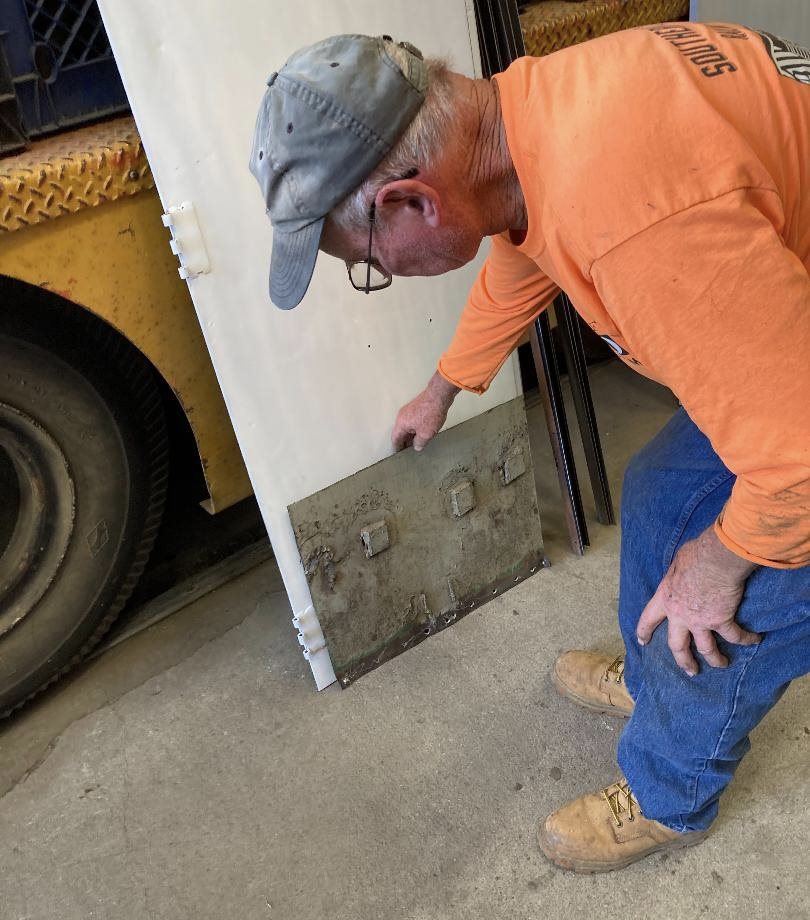 Corey Wylde is heading up that effort and the rest of the crew are pitching in on various aspects of the effort. Some of the latest work has focused on the refurbishing of the front and rear cab doors and one of the the electrical compartment doors. Carl has refurbished the areas that were rusted out and has prepared them for painting. On bottom of the door below, Carl is holding the piece that he cut out and replaced. It had severe damage from amateurish attempts by someone to weld it a long time ago.
Corey Wylde is heading up that effort and the rest of the crew are pitching in on various aspects of the effort. Some of the latest work has focused on the refurbishing of the front and rear cab doors and one of the the electrical compartment doors. Carl has refurbished the areas that were rusted out and has prepared them for painting. On bottom of the door below, Carl is holding the piece that he cut out and replaced. It had severe damage from amateurish attempts by someone to weld it a long time ago.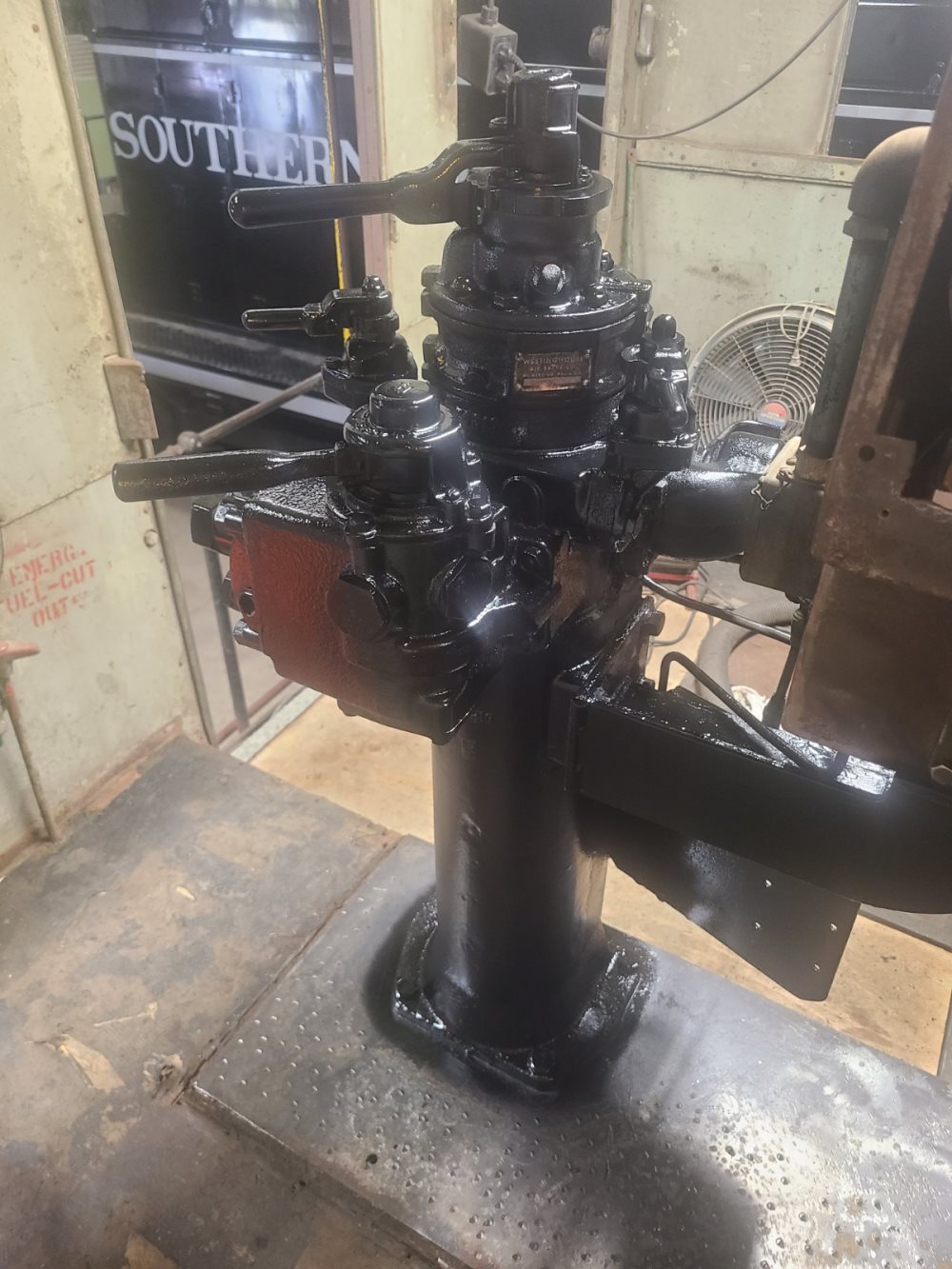 A lot of cleaning and removing of old paint has gone on now for a couple of weeks, focusing on the brake stand and control console. Harry Pederson has been working on that for a number of days. Carl finished the cleaning on the brake stand and painted it black. The brake portions on the brake stand had been refurbished a few months ago so they will probably be the ones used with the locomotive after the refurbishment effort is complete.
A lot of cleaning and removing of old paint has gone on now for a couple of weeks, focusing on the brake stand and control console. Harry Pederson has been working on that for a number of days. Carl finished the cleaning on the brake stand and painted it black. The brake portions on the brake stand had been refurbished a few months ago so they will probably be the ones used with the locomotive after the refurbishment effort is complete.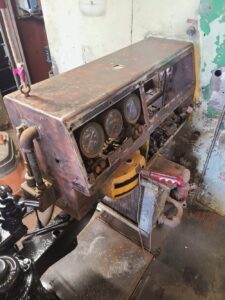
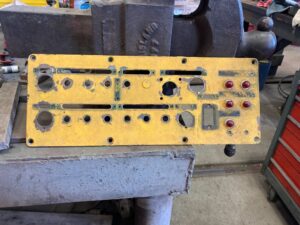
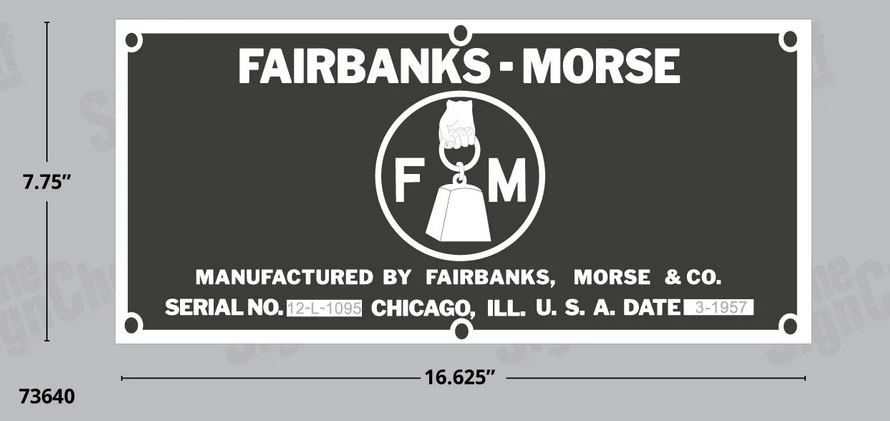
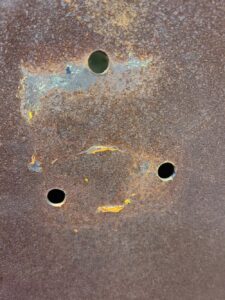 On the front and rear of the locomotive, Santa Fe had attached cast metal identification numbers for the locomotive. Those were removed from the locomotive long ago. Our task was to then try to replicate those those numbers. Evan Werkema found drawings for the numbers. They were originally designed in 1906 and were used on all steam locomotives and even a few Diesels by Santa Fe. But these numbers are not any ordinary font. After a lot of searching, we were able to find a rail-fan that also happens to work in the 3D printing field. He is going to print the correct style numbers “560” out of UV tolerant plastic which we will then paint aluminum to match the original numbers. The picture (right) shows the outline of the number “5” where the original number was attached.
On the front and rear of the locomotive, Santa Fe had attached cast metal identification numbers for the locomotive. Those were removed from the locomotive long ago. Our task was to then try to replicate those those numbers. Evan Werkema found drawings for the numbers. They were originally designed in 1906 and were used on all steam locomotives and even a few Diesels by Santa Fe. But these numbers are not any ordinary font. After a lot of searching, we were able to find a rail-fan that also happens to work in the 3D printing field. He is going to print the correct style numbers “560” out of UV tolerant plastic which we will then paint aluminum to match the original numbers. The picture (right) shows the outline of the number “5” where the original number was attached.SF108 Prelube System
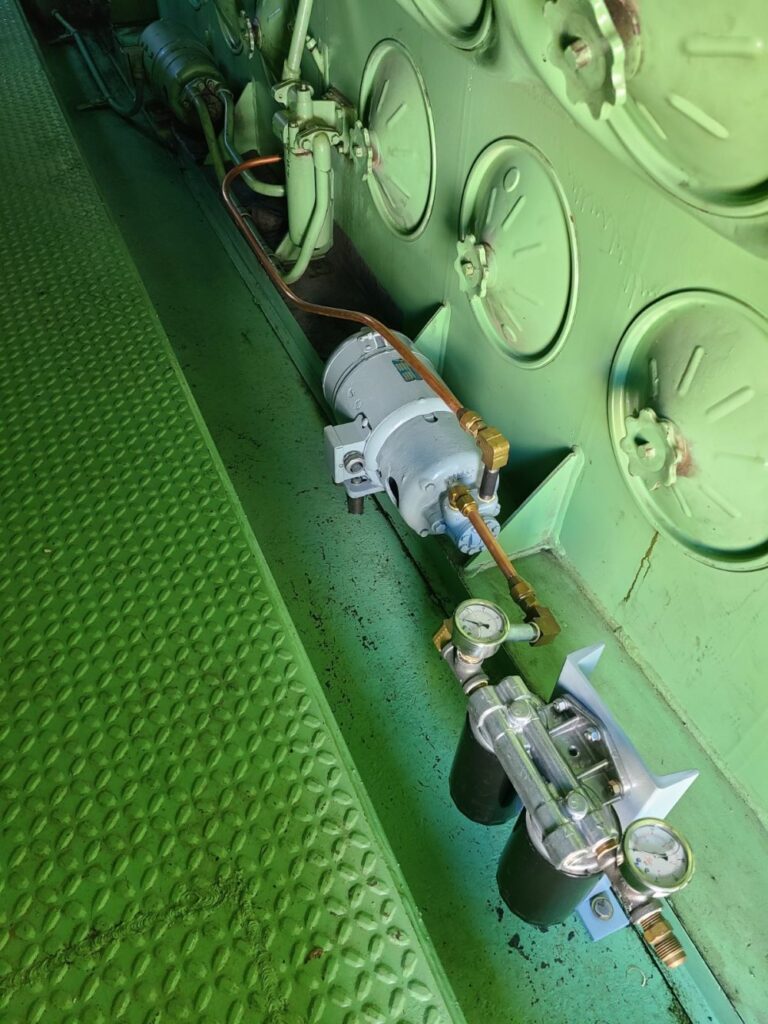 The decision was made to add a pre-lubrication system to SF108. That allows for pumping oil throughout the Diesel engine prior to actually starting the engine. Its an excellent way to avoid engine wear caused by lack of oil flow and pressure while starting the engine. An electric pump was installed that sucks oil out of the crank case and pumps it through filters and then into the output port of the engine’s main oil pump. That forces oil into the oil passages leading to crankshaft main bearings, rod bearings, camshaft bearings, rocker arm bearings, and many other places.
The decision was made to add a pre-lubrication system to SF108. That allows for pumping oil throughout the Diesel engine prior to actually starting the engine. Its an excellent way to avoid engine wear caused by lack of oil flow and pressure while starting the engine. An electric pump was installed that sucks oil out of the crank case and pumps it through filters and then into the output port of the engine’s main oil pump. That forces oil into the oil passages leading to crankshaft main bearings, rod bearings, camshaft bearings, rocker arm bearings, and many other places.
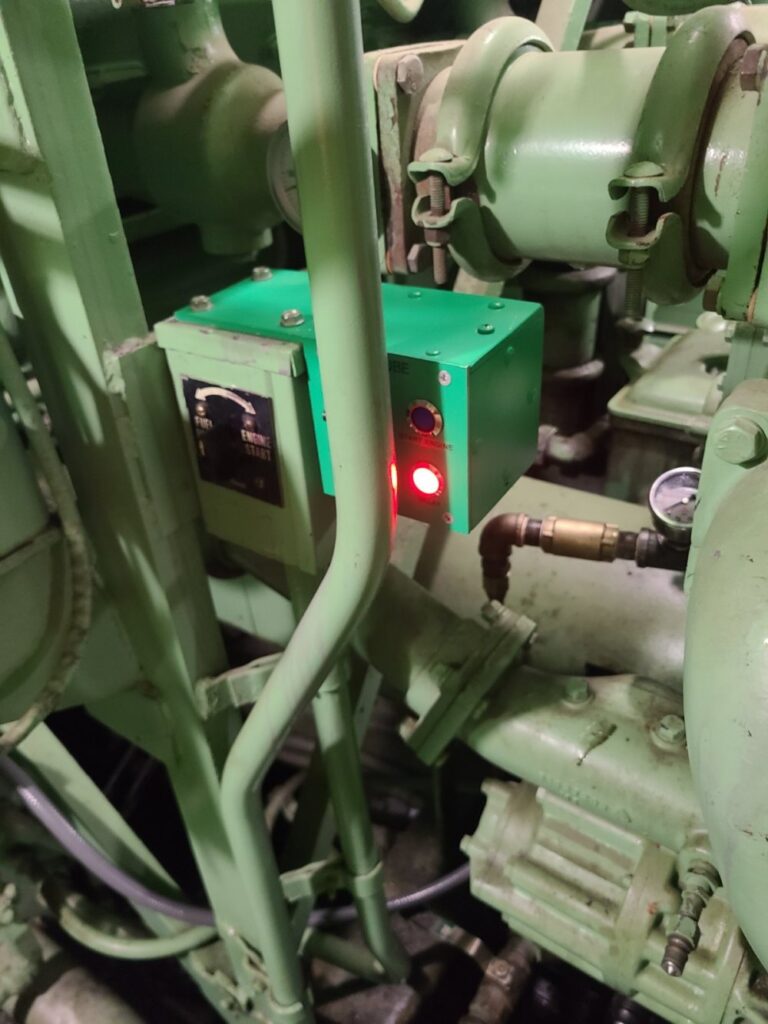
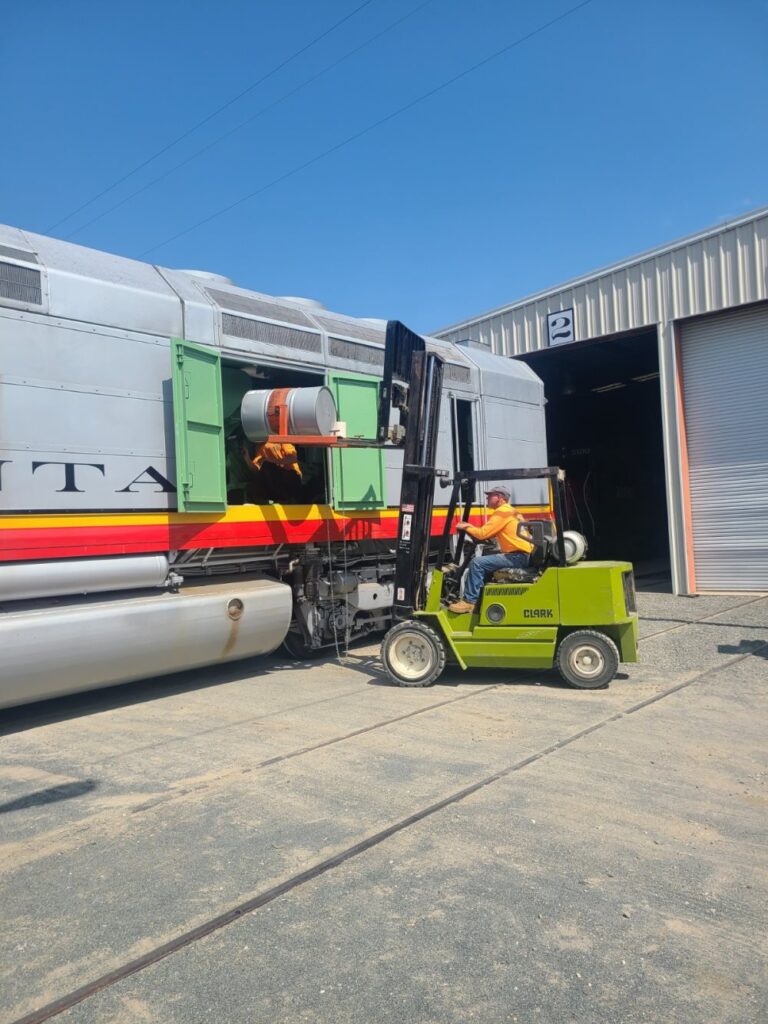
SP1006 Issues
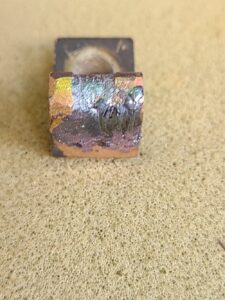 Once the battery field current starts flowing, the generator starts making voltage. That voltage is then fed back into the generator in the shunt field windings. Those windings are polarized in phase with the battery field windings so the two fields add together which produces even more field excitation magnetic fields. So for full power, both fields have to be working.
Once the battery field current starts flowing, the generator starts making voltage. That voltage is then fed back into the generator in the shunt field windings. Those windings are polarized in phase with the battery field windings so the two fields add together which produces even more field excitation magnetic fields. So for full power, both fields have to be working.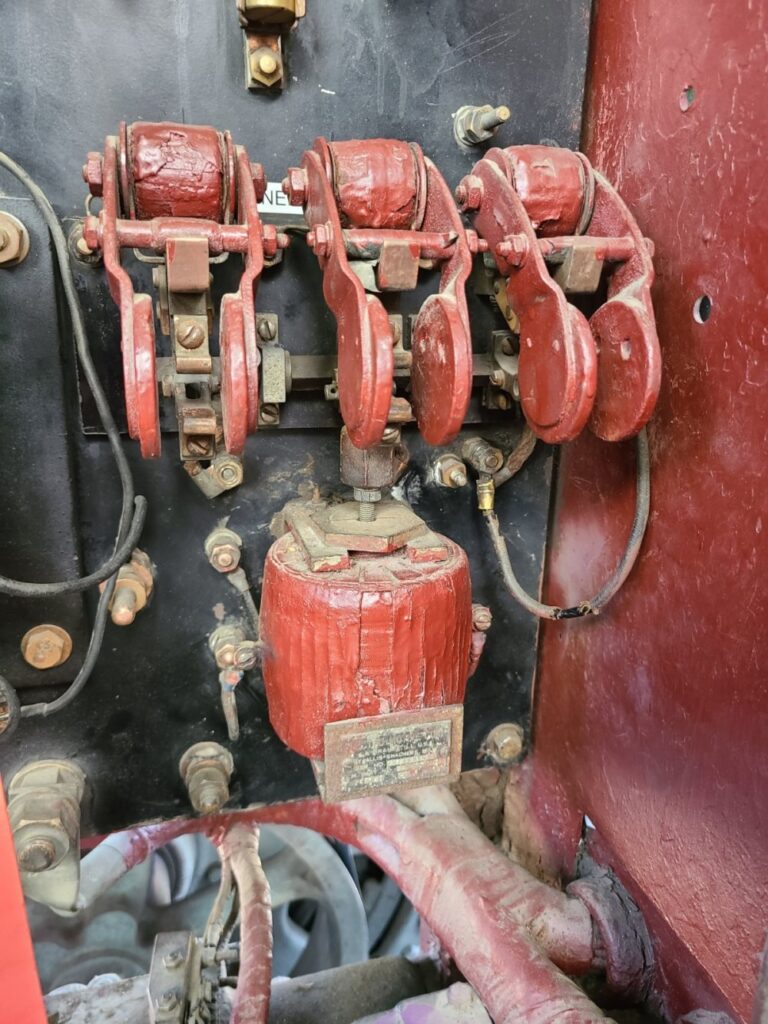 This (left) is the three contact shunt field contactor that had the badly worn bearing on the horizontal shaft.
This (left) is the three contact shunt field contactor that had the badly worn bearing on the horizontal shaft.
